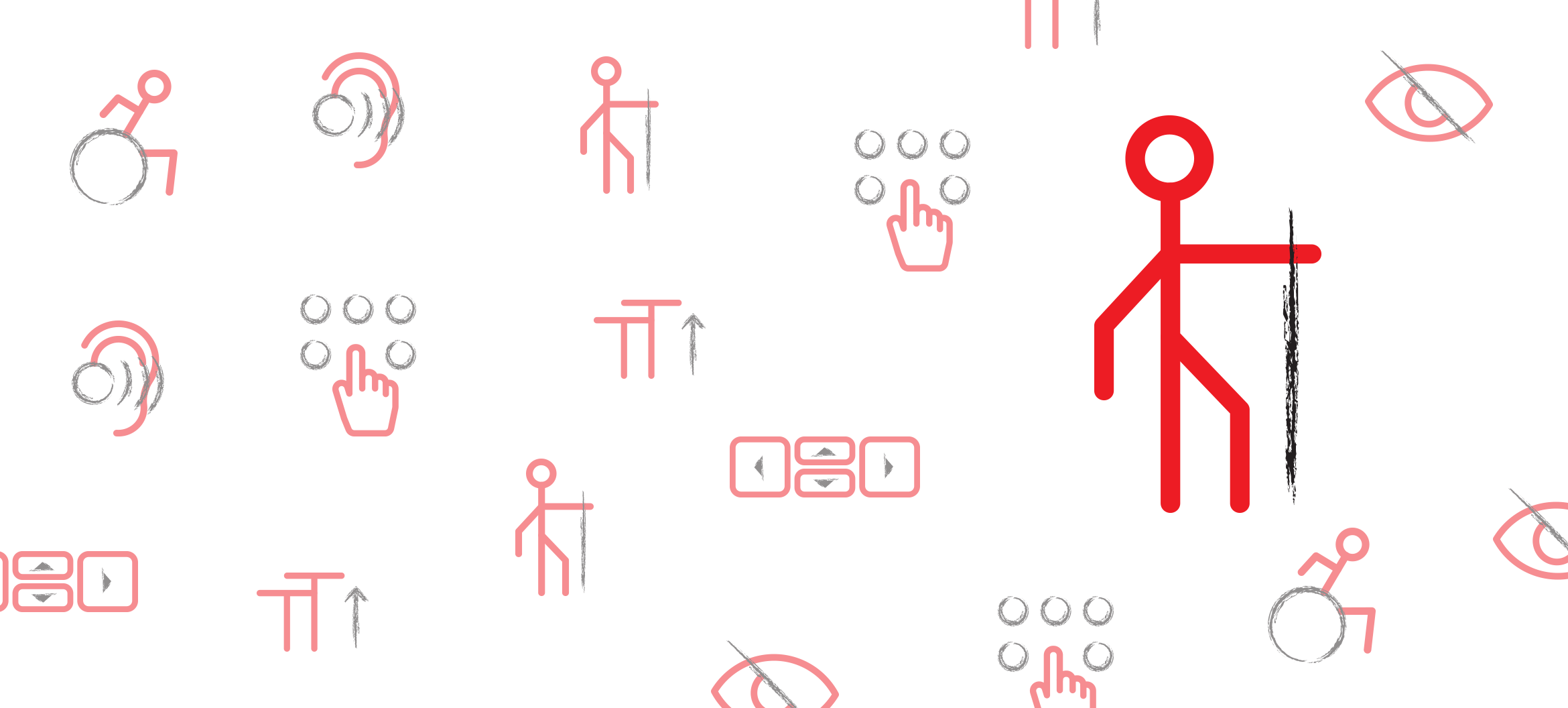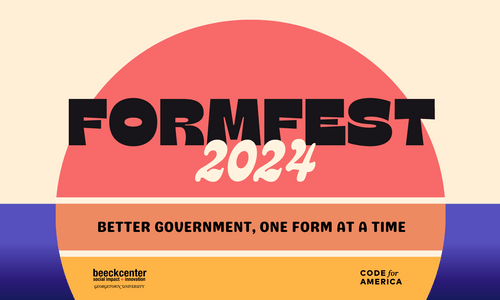
Work is nearing completion updates to the Web Content Accessibility Guidelines (WCAG). The Candidate Recommendation was released in January, which initiated a phase of test implementations to verify that the proposed standards could be met. At the end of April, the Proposed Recommendation was published, which marked the beginning of the test implementations to ensure that the standards could be met. The Accessibility Guidelines Working Group plans to finalize WCAG 2.1 as a W3C Recommendation by around June 2018. My last post, A Brief History of WCAG, gave a quick overview of how we got here. Here’s what you need to know about what’s ahead.
Don’t Panic
First things first: WCAG 2.1 is backwards compatible, and all of the existing guidelines and success criteria are remaining intact. Any measures taken to make a site compliant with WCAG 2.0 are still effective under WCAG 2.1 when it is adopted. WCAG 2.1 is effectively an expansion of the existing framework of standards.
The hierarchy of guidance that was established with WCAG 2.0 will also remain in place. The top level consists of overarching design Principles, followed by Guidelines that outline accessibility goals, and Success Criteria for measuring compliance with each guideline. Techniques (Sufficient and Advisory) are still being provided for each of the success criteria, along with examples of common failures. And, there will still be three Conformance Levels (A, AA, and AAA) to designate the stringency of each success criterion.
In addition, all of the existing guidelines and success criteria will retain their current numbering. So, Success Criterion 2.3.2 in WCAG 2.0 is still Success Criterion 2.3.2 in WCAG 2.1. One result of this decision to be aware of, however, is that the numbering will no longer reflect the relative conformance level of all Success Criteria. In WCAG 2.0, success criteria at Level A are listed first beneath each guideline, followed by those at Level AA and then AAA criteria. The new criteria will be numbered in sequence after the existing criteria. For example, while the new criterion for Character Key Shortcuts is prioritized at level A, it is assigned number 2.4.11, after the existing AAA criterion for Section Headings at 2.4.10.
What’s New
WCAG 2.1 will fill some gaps that exist in WCAG 2.0 in three areas - mobile technology, low vision, and cognitive impairment. Five of the new Success Criteria (SC) address cognitive needs, four address the needs of users with low vision, and the remaining 8 are intended to make mobile devices more accessible to users with disabilities.
Below is a listing of the 17 proposed new success criteria, grouped by area of focus. There have been many changes since the Candidate Recommendation (CR) was published in January. Some criteria have been named and others have been placed beneath different guidelines, resulting in a change in numbering. The numbering below is based on the Editor’s Draft of May 17, 2018. However, since the Editor’s Draft is subject to ongoing revisions, the links lead back to the CR document so that they will remain functional until the final version is published. A link to the most current Editor’s Draft can be found at the top of the CR document.
Cognitive Focus
- 1.3.5 Identify Input Purpose (AA) (CR name: Identify Common Purpose) - Make the purpose of form inputs programmatically identifiable
- 1.3.6 Identify Purpose (AAA) - Make the purpose of all form controls programmatically identifiable.
- 2.2.6 Timeouts (AAA) - Let users know if there is a time limit on inactivity before they will lose data.
- 2.3.3 Animation from Interactions (AAA) (CR number: 2.2.7) - Let users turn of any unnecessary motion effects that are triggered by interactions, such as scrolling.
- 4.1.3 Status Messages (AA) (CR: 3.2.6 Status Changes) - Let users know about changes in content when there is not a change in focus.
Low Vision Focus
- 1.4.10 Reflow (AA) - Allow users to magnify text up to 400% without horizontal scrolling.
- 1.4.11 Non-Text Contrast (AA) - A minimum contrast ratio of 3:1 will apply to non-text elements such as form controls and graphics.
- 1.4.12 Text Spacing (AA) - Allow users to change text spacing without loss of functionality or content.
- 1.4.13 Content on Hover or Focus (AA) - Elements triggered by hover or focus must be dismissable, hoverable, and persistent.
Mobile Focus
- 1.3.4 Orientation (AA) - Do not restrict view and operation to a single orientation. (CR number: 2.6.2)
- 2.1.4 Character Key Shortcuts (A) - Allow users to add a modifier to override single character keyboard shortcuts.
- 2.5.1 Pointer Gestures (A) - Ensure that content and functionality are available without using path-based or multi-point gestures such as swiping or pinching.
- 2.5.2 Pointer Cancellation (A) - Make it possible to cancel an action that has been initiated unintentionally.
- 2.5.3 Label in Name (A) - Visible text labels and accessible names should be consistent.
- 2.5.4 Motion Actuation (A) - Ensure that functions triggered by moving a device can also be activated by other input modalities.
- 2.5.5 Target Size (AAA) - Make controls large enough to be operated easily.
- 2.5.6 Concurrent Input Mechanisms (AAA) - Do not restrict the use of alternative input technologies.
The Road Ahead
The development of WCAG 2.1 is being carried out under the well-established process used by the World Wide Web consortium (W3C) for all of their web standards. After the initial Public Working Draft was made available for comment in February 2017, WCAG 2.1 went through six rounds of Public Working Drafts before becoming a Candidate Recommendation.
In order to become a Proposed Recommendation, and then a final W3C Recommendation, there must be evidence that the new standards can be implemented and effectively tested. The required evidence includes a minimum number of successful implementations for each criterion, adequate support documentation, and clear test procedures for supporting Techniques. Test implementations are now being evaluated by teams of volunteers.
Forward thinking web developers are already planning for the adoption of these new standards. For Example, Drupal.org has an issue devoted to tracking change to WCAG 2.1 so that Drupal core can continue to be a highly accessible CMS. The goal is for Drupal core to satisfy WCAG 2.1 Success Criteria at levels A and AA.
Incremental Updates vs Wholesale Revision
After WCAG 1.0 was released, a Public Draft for WCAG 2.0 was published within 18 months in January of 2001. The final product of the WCAG 2.0 working group was not released until 2008. In the interim, there were many revisions and discussions, and in the meantime technologies were changing. This first dot release for WCAG 2 allows the standards to remain in step with the way we use the web today.
At the same time, a complete rework of the WCAG framework is underway in a project called Silver. Project Silver will be a complete re-visioning of accessibility. The product of this working group will be called simply Accessibility Guidelines, or AG, without the WC. The name is derived from the fact that Ag is the chemical symbol for elemental silver.
Update! WCAG 2.1 became a formal recommendation of the W3C on June 5, 2018!




